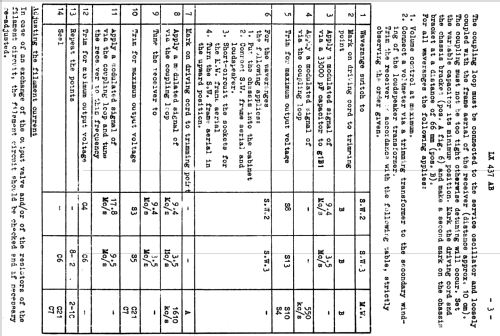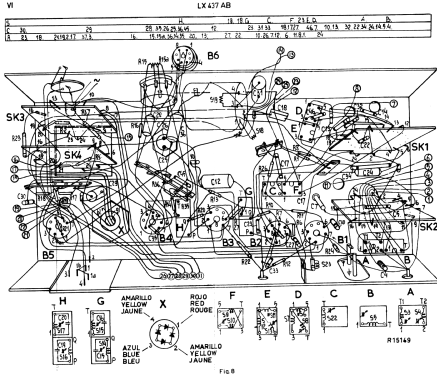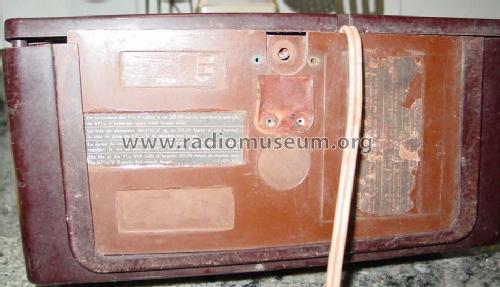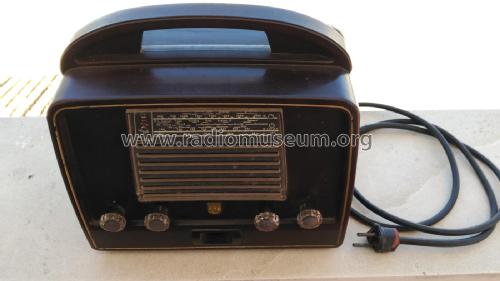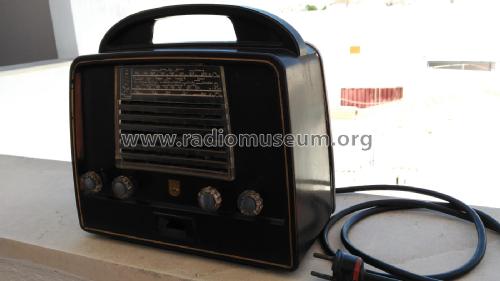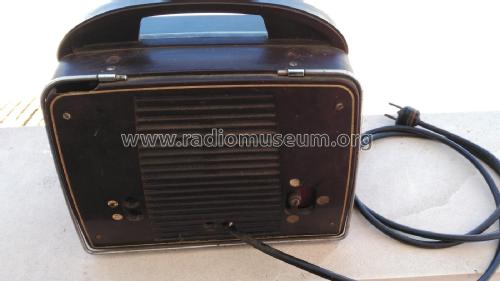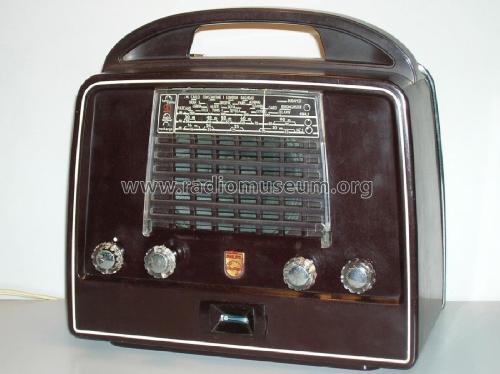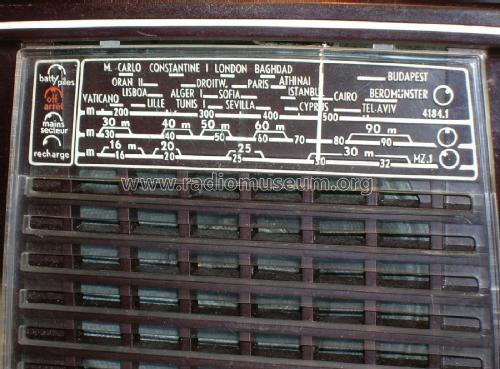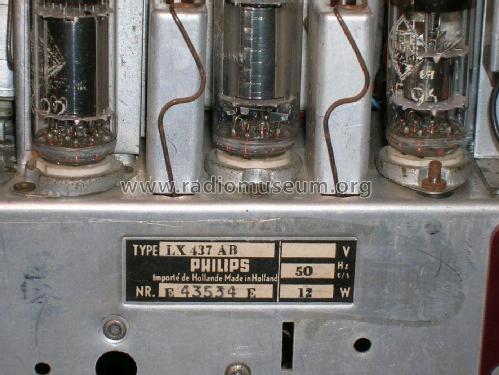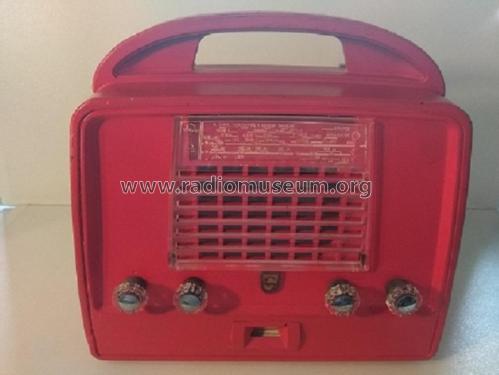- País
- Holanda
- Fabricante / Marca
- Philips; Eindhoven (tubes international!); Miniwatt
- Año
- 1954/1955
- Categoría
- Radio - o Sintonizador pasado WW2
- Radiomuseum.org ID
- 114083
Haga clic en la miniatura esquemática para solicitarlo como documento gratuito.
- Numero de valvulas
- 6
- Numero de transistores
- Semiconductores
- Selengleichrichter
- Principio principal
- Superheterodino con paso previo de RF; ZF/IF 452 kHz; 2 Etapas de AF
- Número de circuitos sintonía
- 6 Circuíto(s) AM
- Gama de ondas
- OM y dos OC
- Tensión de funcionamiento
- Red / Baterías o pilas / AC 110; 150; 220 / 2 x 1,5 & 2 x 67,5 Volt
- Altavoz
- Altavoz dinámico (de imán permanente) / Ø 5 inch = 12.7 cm
- Potencia de salida
- 0.3 W (unknown quality)
- Material
- Bakelita
- de Radiomuseum.org
- Modelo: LX437AB - Philips; Eindhoven tubes
- Forma
- Portátil > 20 cm (sin la necesidad de una red)
- Ancho, altura, profundidad
- 260 x 250 x 120 mm / 10.2 x 9.8 x 4.7 inch
- Anotaciones
-
The Philips receiver LX437AB features a tuned rf preamplifier with aperiodic coupling to the mixer stage.
Power consumption from AC mains: 17W. Selenium rectifier bridge.
- Precio durante el primer año
- 1,950.00 PTE
- Mencionado en
- -- Original prospect or advert
- Documentación / Esquemas (1)
- -- Original-techn. papers.
- Autor
- Modelo creado por Mario Coelho. Ver en "Modificar Ficha" los participantes posteriores.
- Otros modelos
-
Donde encontrará 5273 modelos, 4419 con imágenes y 3458 con esquemas.
Ir al listado general de Philips; Eindhoven (tubes international!); Miniwatt
Colecciones
El modelo es parte de las colecciones de los siguientes miembros.
Contribuciones en el Foro acerca de este modelo: Philips; Eindhoven: LX437AB
Hilos: 1 | Mensajes: 3
Hi.Radiophiles, It came to me for repair/recover one portable radio LX 437 AB.I don't have its schematic,but supose may be similar to model LI 437/AB.My problem is that I don't have the correct filament tensions when switched to the mains.As a matter of fact,the wires that should conect to the batteries have been cut so I can not test it with the batteries once they are not there.And some help would be very welcome if somebody could explain me the wiring of the tubes filaments,once I find very dificult to understand the complexity of the switch wiring together with the dificult access to components and lack of data of voltages.
May I wish to all members and their families a Merry Christmas and a Happy new Year with greetings from our Sunny Algarve!
Antonio Barros-Regada, 21.Dec.13






